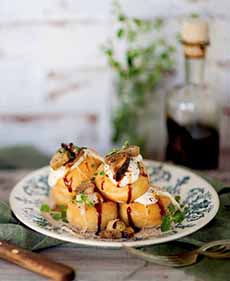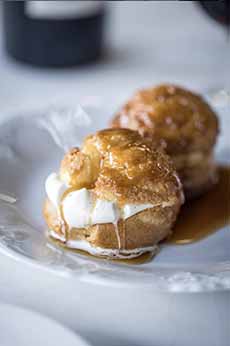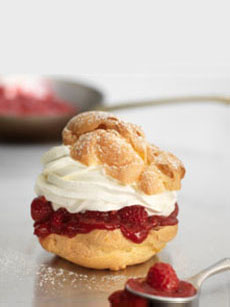National Cream Puff Day & The History Of Cream Puffs
|
One might ask why the holiday-scheduling powers that be allowed January 2nd to become National Cream Puff Day. Haven’t we just finished six weeks of heavy eating? Don’t we have resolutions to diet in the New Year? Aren’t we running out of gyms? But, since it is National Cream Puff Day, a few words of puffery: Cream puffs are made from pâte à choux (pot-ah-shoo), also called choux paste, cream puff paste or puff pastry. This very versatile dough is used for both sweet and savory pastries. > Here’s a cream puff recipe from chocolatier Michael Recchiuti. >There are more cream puff recipes below. Of those two pastries that people consider siblings, the cream puff and the éclair, the cream puff is the elder, dating back to the late 16th century. The elongated éclair did not appear until 200 years later, in the late 18th century. Originally, the cream puff was filled with whipped cream and served plain (or late, dusted with powdered sugar). Now, the round pastry, which is piped from a bag and baked, is often halved horizontally, as in the photo at right. Profiteroles, cream puffs stuffed with ice cream and topped with chocolate sauce, are a 20th-century dish. Today, both can be prepared in any way that the pastry chef can conceive, from pistachio whipped cream and glaze to saffron custard with caramel glaze to blueberry jam with cassis whipped cream and cassis glaze. Some cream puffs have chocolate-glazed tops, similar to the éclair. So: Who invented them? We don’t know exactly, but we do know who invented the pastry portion. The story most often told, likely apocryphal, is that they were invented by Panterelli, the head chef of a contingent brought to France by Catherine de’ Medici of Italy (1519-1589), when she married King Henry II in 1533. The story told is that Panterelli accidentally created the cream puff in 1540 by adding too much flour to a pastry dough. He baked the dough anyway and filled the resulting puff with whipped cream and pastry cream. Whether it was by such an accident or by regular talent, Panterelli did develop a hot dough†, called pâté a Panterelli, to make gateaux (rich cakes) and pastries. Also known as choux pastry, the dough was initially irregular in shape, which earned it the name—choux (shoo) is the French word for cabbage. Other chefs built on his creation to develop cream puffs, éclairs, and profiteroles. Each country put its own spin on the cream puff. In France, it’s known as choux à la crème; in the U.K. it’s called cream puffs, and in Italy it’s called bigne. About dating the arrival of the cream puff: There is documentation from the 1800s that cream puffs became a popular dessert and tea-time pastry in France and England. Cream puffs also became popular in the U.S. in the mid-1800s. They were first documented on the menu in 1851 at the Revere House Restaurant in Boston. Adding to the French invention, a Boston cream puff tops the pastry with chocolate glaze (photo #5, below). In addition to the whipped cream/pastry cream, you can fill cream puffs with: |
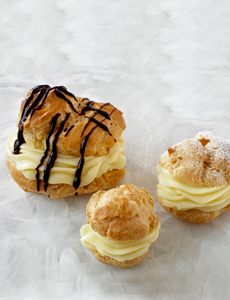 [1] Who can turn down a cream puff (photo courtesy American Egg Board)?
|
|
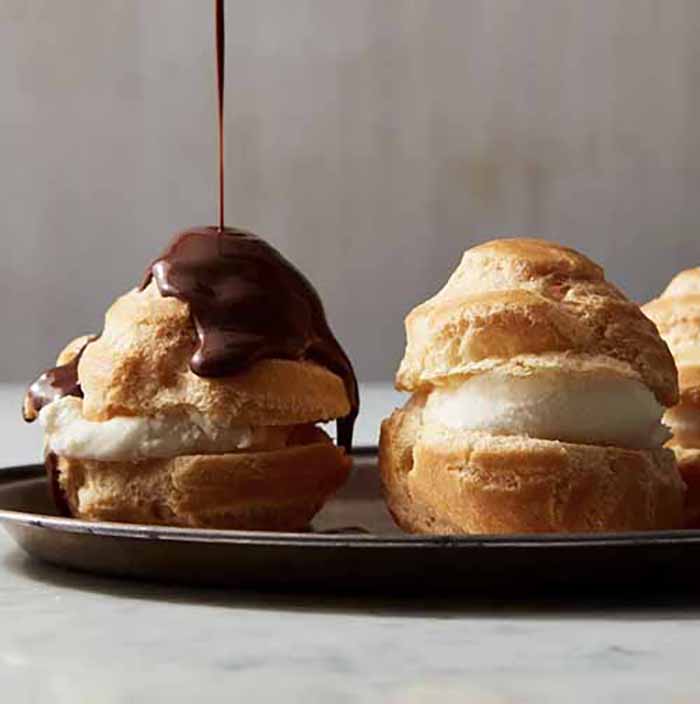 [5] Boston cream puffs added a topping of ganache (photo © King Arthur Baking). ________________ †Hot dough refers to a dough made by mixing flour with very hot water, creating a paste. CHECK OUT WHAT’S HAPPENING ON OUR HOME PAGE, THENIBBLE.COM. |
||
